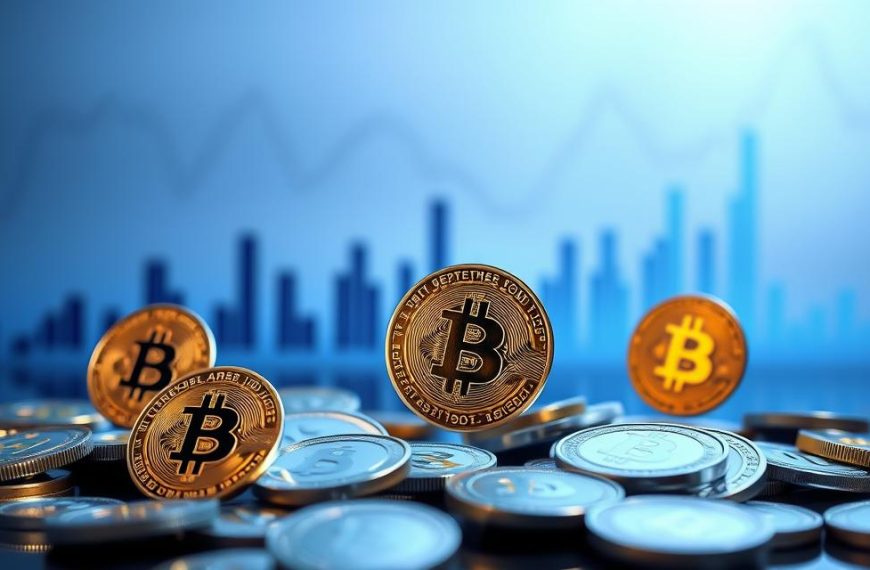Decentralized exchanges (DEXs) are peer-to-peer marketplaces built on blockchain technology. Unlike traditional platforms, they eliminate intermediaries, giving users full control over their assets. This approach aligns with the core principles of Web3: decentralization and self-custody.
Centralized exchanges (CEXs), such as Coinbase, manage user funds directly. In contrast, DEXs operate through smart contracts, ensuring transparency and security. These platforms play a vital role in the DeFi ecosystem, enabling seamless trading and liquidity provision.
With over $40 billion in monthly trading volume, DEXs like Uniswap and PancakeSwap lead the market. Key features include non-custodial wallets and liquidity pools, making them essential tools for crypto enthusiasts. Explore how these platforms are reshaping the financial landscape.
Introduction to Decentralized Cryptocurrency Exchanges
The rise of blockchain technology has paved the way for permissionless trading systems. These platforms allow users to trade digital assets directly, without intermediaries. Over the years, their share of global trade volume has surged from 0.11% in 2019 to 14% in 2023, showcasing their growing popularity.
One of the most significant advantages is permissionless access. Anyone with an internet connection can participate, fostering financial inclusion. This is a stark contrast to traditional systems, which often exclude underserved populations.
Users retain full control of their funds through self-hosted wallets and private keys. This eliminates the risk of losing assets due to platform hacks, as seen in the infamous Mt. Gox incident. On-chain transaction recording further enhances transparency, ensuring every trade is verifiable.
Most of these platforms avoid KYC/AML requirements, offering greater privacy. Additionally, their composability with other DeFi protocols, such as lending platforms, creates a seamless ecosystem for users. This integration is reshaping the future of finance, making it more accessible and efficient.
How Does a Decentralized Exchange Work?
Automated platforms using smart contracts redefine how users trade digital assets. These contracts execute trades automatically, ensuring transparency and efficiency. Unlike traditional systems, there’s no need for intermediaries, giving users full control over their funds.
Smart Contracts and Automation
Smart contracts are the backbone of these platforms. They lock assets, match orders, and settle trades automatically. This process eliminates the risk of human error and ensures secure transactions. For example, Uniswap uses these contracts to charge a 0.3% trading fee, paid via ETH gas fees.
Gas fees are determined by network congestion. During peak times, transaction costs can rise significantly. Users must consider these fees when planning trades, as they impact overall profitability.
Accessing a DEX
To start trading, users need a compatible wallet, such as MetaMask or Coinbase Wallet. The process involves funding the wallet, connecting it to the platform’s interface, and executing swaps. Most platforms offer web interfaces, while some provide dedicated apps for convenience.
Cross-chain compatibility remains a challenge. Not all platforms support multiple blockchains, limiting users’ ability to trade assets across different networks. However, advancements in technology are gradually addressing this issue.
| Access Method | Pros | Cons |
|---|---|---|
| Web Interfaces | Easy to use, no downloads required | Dependent on browser compatibility |
| Dedicated Apps | Enhanced security, offline access | Requires device storage |
While centralized platforms offer instant settlement, transactions on these systems rely on blockchain confirmations. This ensures transparency but may result in slower processing times during high network activity.
Types of Decentralized Exchanges
Peer-to-peer trading platforms have evolved significantly with blockchain advancements. These systems now offer diverse architectures, catering to different user needs. Two primary models dominate the landscape: Order Book DEXs and Automated Market Makers (AMMs). Each has unique features and benefits, shaping the future of digital asset trading.
Order Book DEXs
Order Book DEXs function similarly to traditional exchanges, matching buy and sell orders through a centralized ledger. Platforms like dYdX use hybrid models, combining on-chain and off-chain elements. This approach enhances scalability, allowing dYdX to handle $1.5 billion in daily volume.
On-chain architectures, such as Serum, rely entirely on blockchain technology. They offer transparency but face challenges with speed and liquidity. Hybrid models strike a balance, improving performance while maintaining decentralization. However, market segregation remains an issue, as users often split their activities across multiple platforms.
Automated Market Makers (AMMs)
AMMs, like Uniswap, revolutionized trading by eliminating the need for order books. Instead, they rely on liquidity pools and constant product formulas for price discovery. Uniswap V3, for instance, reached $5 billion in Total Value Locked (TVL) in 2023, showcasing its dominance.
Liquidity providers earn fees by depositing tokens into these pools. However, they face risks like impermanent loss, where the value of their deposited assets fluctuates. Scalability solutions, such as Layer 2 networks and app-specific chains, aim to address these challenges, ensuring smoother operations.
Balancer, another popular AMM, introduces weighted pools, allowing users to customize their trading strategies. These innovations highlight the flexibility and adaptability of AMMs, making them a cornerstone of the DeFi ecosystem.
Advantages of Using a Decentralized Exchange
Trading platforms built on blockchain offer unique benefits for users. These systems prioritize security, control, and cost-efficiency, making them a preferred choice for many. Below, we explore the key advantages that set them apart from traditional systems.
Custody and Control of Funds
One of the standout features is the non-custodial architecture. Users retain full ownership of their assets through private keys. This eliminates the risk of losing funds due to platform hacks, a common issue with centralized systems. Statistics show that 98% of users maintain full asset custody, ensuring peace of mind.
Multisig wallet integrations further enhance security. Unlike custodial accounts on centralized platforms, these wallets require multiple approvals for transactions. This added layer of protection reduces vulnerabilities and aligns with the principles of decentralized finance.
Lower Fees and Privacy
Cost savings are another significant advantage. Traditional platforms like Binance charge 0.1% spot fees and 0.5% withdrawal fees. In contrast, these systems often charge as low as 0.3%, providing substantial savings for frequent traders.
Privacy is also a priority. Users can trade pseudonymously, avoiding intrusive KYC/AML requirements. This approach minimizes regulatory surveillance risks while preserving anonymity. Additionally, these platforms often list emerging tokens before centralized systems, offering early access to new opportunities.
- Fee savings: 0.3% vs 0.6%+ on centralized platforms.
- Non-custodial architecture prevents exchange hacks.
- Pseudonymous trading ensures privacy.
- Access to emerging tokens pre-listing on centralized systems.
- Reduced regulatory surveillance risks.
Disadvantages of Decentralized Exchanges
While decentralized platforms offer numerous benefits, they also come with challenges. These issues often stem from the underlying technology and the evolving nature of the ecosystem. Below, we explore the key drawbacks users may encounter.
Scalability and User Experience
One major issue is scalability. For instance, Ethereum processes only 15 transactions per second (TPS), compared to Visa’s 24,000 TPS. This limitation leads to network congestion, higher gas fees, and slower transaction times during peak periods.
User experience can also be a barrier. Setting up a wallet, managing gas fees, and navigating complex interfaces can deter beginners. Unlike centralized platforms, which offer streamlined onboarding, decentralized systems often require technical knowledge.
Failed transactions during high network activity add to the frustration. Users not only lose gas fees but also face delays in executing trades. Layer 2 solutions, such as Optimism and Arbitrum, aim to improve throughput but are still in their early stages.
Liquidity and Market Segregation
Liquidity fragmentation is another concern. With multiple Automated Market Maker (AMM) pools, assets are spread thin across platforms. This reduces trading efficiency and increases slippage, especially for less popular tokens.
Market segregation further complicates matters. The top 5 platforms control 80% of decentralized trading volume, leaving smaller players with limited access to liquidity. This concentration can hinder competition and innovation in the ecosystem.
Fiat onboarding remains a challenge. Most decentralized systems require users to first purchase cryptocurrencies on centralized platforms, adding an extra step. This dependency undermines the goal of complete decentralization.
- High gas fees during network congestion.
- Complex wallet setup and gas management.
- Liquidity fragmentation across multiple pools.
- Market dominance by a few platforms.
- Fiat onboarding requires centralized intermediaries.
Decentralized Exchanges vs. Centralized Exchanges
Blockchain-powered trading platforms have sparked a heated debate between centralized and decentralized models. While centralized exchanges (CEXs) handled 86% of August 2023’s global volume, decentralized systems prioritize user control and security. Below, we dissect their key differences.
Custody and Security
CEXs rely on hot wallets, making them prime targets—95% of hacks affect these platforms. In contrast, non-custodial models let users hold private keys, eliminating third-party risk.
“Centralized platforms are honey pots for hackers, while decentralized systems shift responsibility to users.”
Liquidity and Trading Efficiency
CEXs dominate with deep order books, minimizing slippage. Decentralized platforms face liquidity fragmentation, causing higher price impacts for large trades. For example, Uniswap’s slippage can exceed 1% for less popular assets.
- CEX Advantages: Instant settlements, fiat onboarding.
- DEX Advantages: No KYC, early access to tokens.
Regulatory and Institutional Adoption
CEXs comply with KYC/AML laws, attracting institutions. Decentralized models struggle with regulatory ambiguity, limiting Wall Street adoption. Hybrid solutions like Binance DEX aim to bridge this gap.
| Feature | Centralized | Decentralized |
|---|---|---|
| Custody | Platform-controlled | User-controlled |
| Liquidity | High (order books) | Variable (AMM pools) |
Arbitrage opportunities thrive due to price gaps between these models. Traders exploit discrepancies, but network delays on decentralized platforms can reduce profitability.
The Future of Decentralized Exchanges
The evolution of blockchain-based trading platforms is reshaping the financial ecosystem. With advancements in technology, these systems are becoming more efficient, secure, and accessible. Institutions are now exploring compliant wrappers to integrate these platforms into traditional finance.
Cross-chain interoperability is a key focus. Solutions like ZK-rollups enable over 2,000 transactions per second on networks like StarkNet. This enhances scalability and reduces costs, making these platforms more viable for everyday use.
AI-powered liquidity management tools are also gaining traction. These innovations optimize trading strategies, ensuring smoother operations and better returns for users. Such tools are essential for handling the growing complexity of the DeFi ecosystem.
Regulatory developments are shaping the future of these platforms. Governments worldwide are working to create frameworks that balance innovation with consumer protection. This will likely lead to increased institutional adoption and mainstream acceptance.
Enterprise adoption of DeFi is driving innovation. Companies are leveraging these platforms to streamline operations and access new markets. This trend is expected to accelerate, further integrating blockchain into global finance.
Finally, the expansion of NFT and real-world asset trading is opening new opportunities. Platforms are now enabling users to trade everything from art to real estate, creating a more inclusive financial system. The future of these platforms is bright, with endless possibilities for growth and innovation.
Risks and Considerations When Using DEXs
Using blockchain-based trading platforms comes with its own set of challenges. While they offer greater control and transparency, users must be aware of potential vulnerabilities. From smart contract exploits to network inefficiencies, understanding these risks is essential for safe trading.
Smart Contract Risks
Smart contracts are the backbone of these platforms, but they are not immune to flaws. Common attack vectors include reentrancy and oracle manipulation. For example, reentrancy attacks exploit vulnerabilities in contract code, allowing malicious actors to drain funds.
Oracle manipulation is another concern. Bad actors can manipulate price feeds, leading to unfair trades. To mitigate these risks, platforms rely on audits from firms like CertiK and OpenZeppelin. These audits ensure code integrity and reduce vulnerabilities.
Insurance protocols like Nexus Mutual offer additional protection. Users can purchase coverage against smart contract failures, providing peace of mind. However, these solutions are not foolproof and require careful evaluation.
Frontrunning and Network Risks
Frontrunning is a significant issue on blockchain-based platforms. Miners or bots can exploit transaction ordering to profit at users’ expense. Sandwich attacks, a form of frontrunning, involve placing orders before and after a user’s trade to manipulate prices.
Network congestion exacerbates these problems. During peak times, gas fees skyrocket, and transactions slow down. Layer 2 solutions like Optimism aim to address these issues by improving throughput and reducing costs.
Governance tokens also pose risks. Malicious actors can exploit voting mechanisms to influence platform decisions. This highlights the need for robust governance frameworks to protect user interests.
- Reentrancy and oracle manipulation are common attack vectors.
- Sandwich attacks exploit transaction ordering for profit.
- Audits by CertiK and OpenZeppelin enhance security.
- Insurance protocols like Nexus Mutual provide coverage.
- Governance tokens can be vulnerable to exploitation.
- Layer 2 solutions improve network efficiency.
By understanding these risks, users can make informed decisions and trade safely. Staying updated on security best practices is crucial for navigating the evolving landscape of blockchain-based platforms.
Conclusion
Blockchain-based trading platforms have transformed how users interact with digital assets. Unlike centralized systems, these platforms offer full custody, eliminating counterparty risks. This shift empowers individuals to manage their funds securely and independently.
The regulatory landscape is evolving, with governments working to balance innovation and consumer protection. Infrastructure improvements, such as Layer 2 solutions, are reducing friction and enhancing the user experience. These advancements make decentralized platforms more accessible to a broader audience.
A diversified exchange strategy is recommended. Use decentralized platforms for asset sovereignty and centralized systems for fiat onboarding. This hybrid approach ensures flexibility and maximizes opportunities in the crypto space.
Looking ahead, the convergence of decentralized and centralized models in a multi-chain future seems inevitable. As the ecosystem matures, trading will become more seamless, secure, and inclusive. Embrace these platforms to stay ahead in the evolving financial landscape.



















